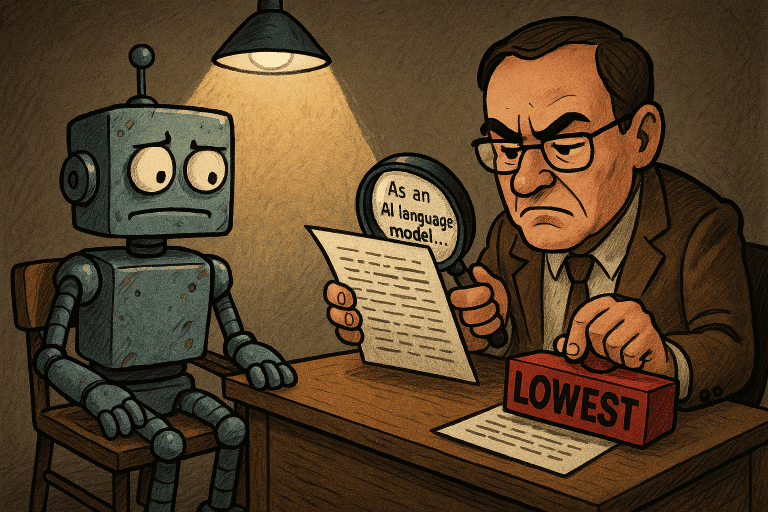April Pranks from Google 2025: AI Content Gets a Slap
Google’s 2025 update now slaps AI-generated content with a “Lowest” rating. Quality raters target low-effort, copy-paste pages to push for genuine originality.

Google’s 2025 update now slaps AI-generated content with a “Lowest” rating. Quality raters target low-effort, copy-paste pages to push for genuine originality.

So, once again, Google’s tightening the screws. Now, their human quality raters are on the hunt for content produced by neural networks or other automated gizmos – and they’ll be slapping it with the lowest possible rating, “Lowest.” This was announced straight from Google’s own John Mueller during Search Central Live in Madrid, while Aleida Solis quickly spilled the details on LinkedIn.
For the first time ever, Google bothered to define Generative AI. In Section 2.1 of their guidelines, they describe it as a “kind of machine learning model” that can create new content – be it text, images, and so on. They note that while it’s a handy tool, much like any hammer, you can end up hurting yourself if you overdo it. Classic.
Google went all out here. They scrapped the old Section 4.6.3 on auto-generated content and replaced it with new subsections that laser in on mass-produced, low-quality content churned out carelessly – even when AI abuse is involved.
What’s new in 2025 (in the same spirit as last year’s clampdowns):
How is a rater supposed to tell if content was generated by AI or some other automated process? There aren’t any hard-and-fast rules, but there are hints in the section on “paraphrased content”:
Even the most cunning spy wouldn’t get this close to a bust.
A new section clarifies when content isn’t total trash (“Lowest”) but still deserves a “Low” rating.
Examples of “Low” content include simple social media reposts with a few personal words tossed in, pages crammed with embedded videos or images without any commentary, and “best of” lists based on someone else’s reviews – in short, all that garbage trying to pass as original, but falling way short.
A new term for that “fluff” content – when a page is stuffed with text or elements that take up space but offer no real benefit, and even get in the way of finding what really matters.
Even if the content isn’t harmful per se, if it interferes with the user’s experience (especially when useful information is buried under ads, cookie-cutter intros, or bloated paragraphs), the page can still end up with a “Low” rating.
The guidelines now zero in on any “exaggerated or slightly misleading statements” made by the content creator – even if it’s not outright deception.
Raters are expected to judge based on the actual content and the site’s external reputation, not just trust claims like “I’m an expert!” If the alleged qualifications read more like marketing hype than real expertise, it’s a “Low.”
Things are getting wild. Google is clearly pushing for more “people-helpful content” crafted with genuine effort and expertise, not this machine-made, lazy mass production. It looks like the era of low-effort, AI-powered or copy-paste websites is winding down before it even properly got started. Either invest in quality and originality, or prepare to be left behind. That’s the long and short of it.
